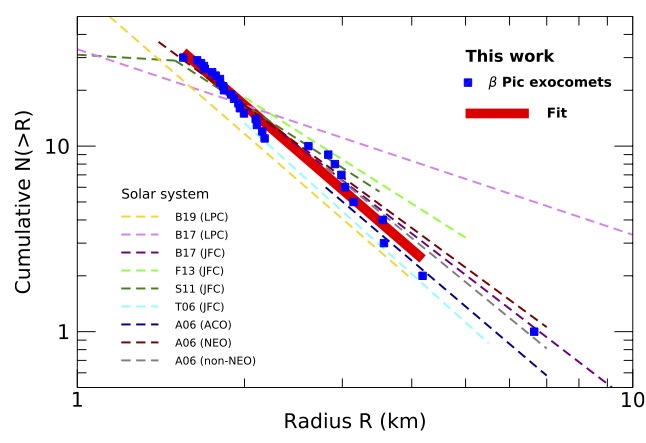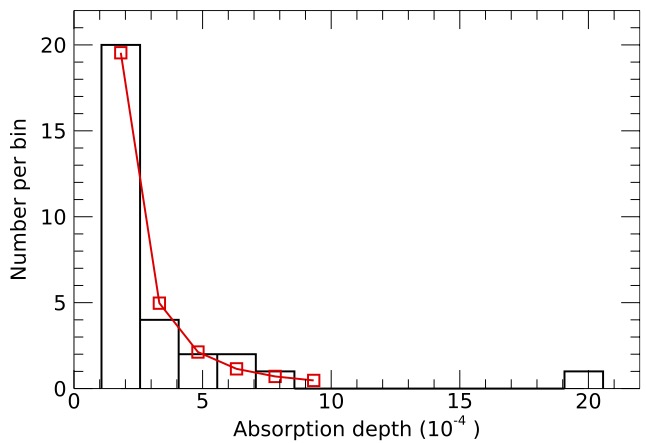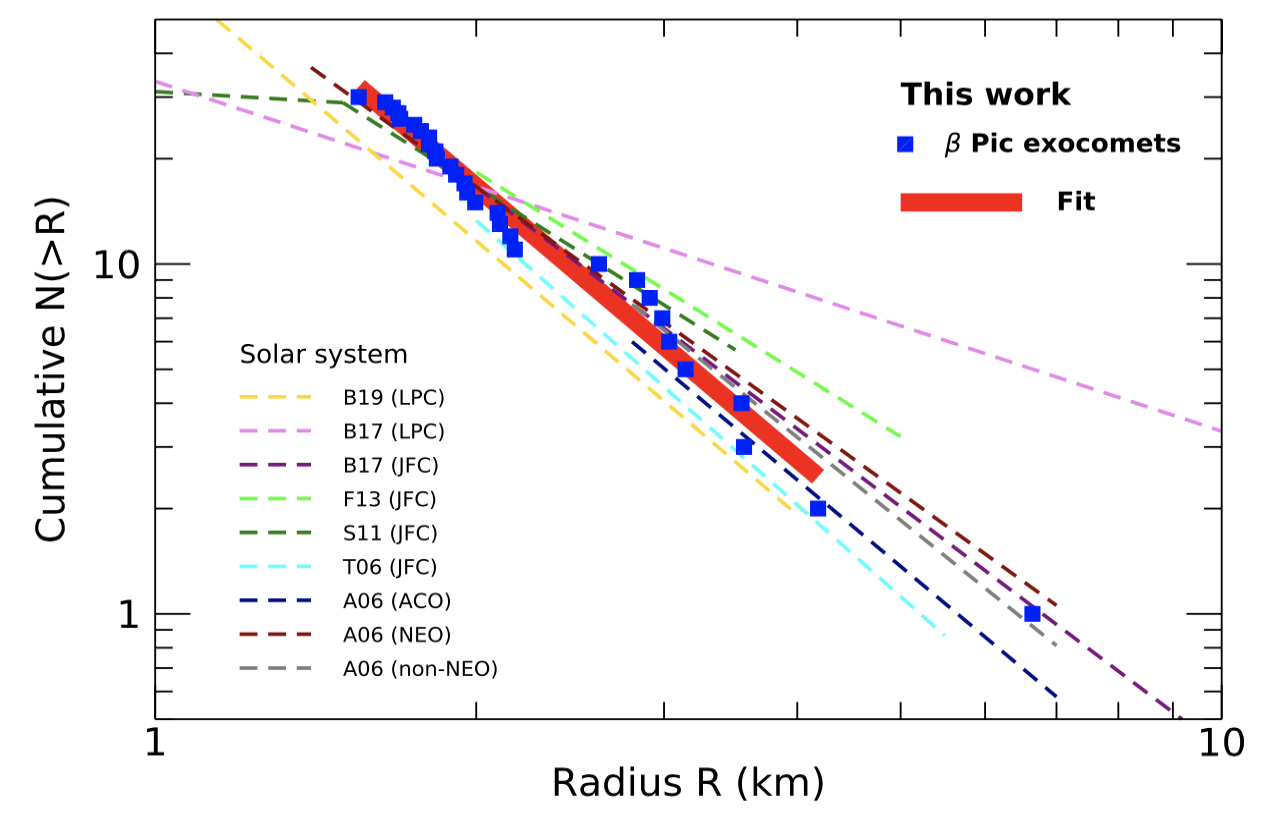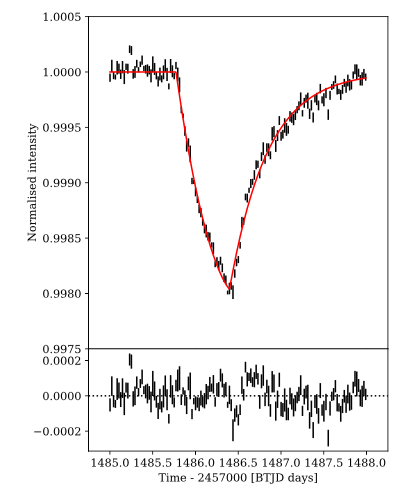Exocomets around Beta Pictoris
Seeing the shadows of exocomet tails in the Beta Pictoris system

In 2019 we saw the transit of a comet’s tail in broadband light in another stellar system, Beta Pictoris (Zieba et al., 2019). The sensitivity of the TESS satellite enabled the detection of the distinctive shark’s tooth shape predicted over 20 years earlier by Lecavelier Des Etangs.
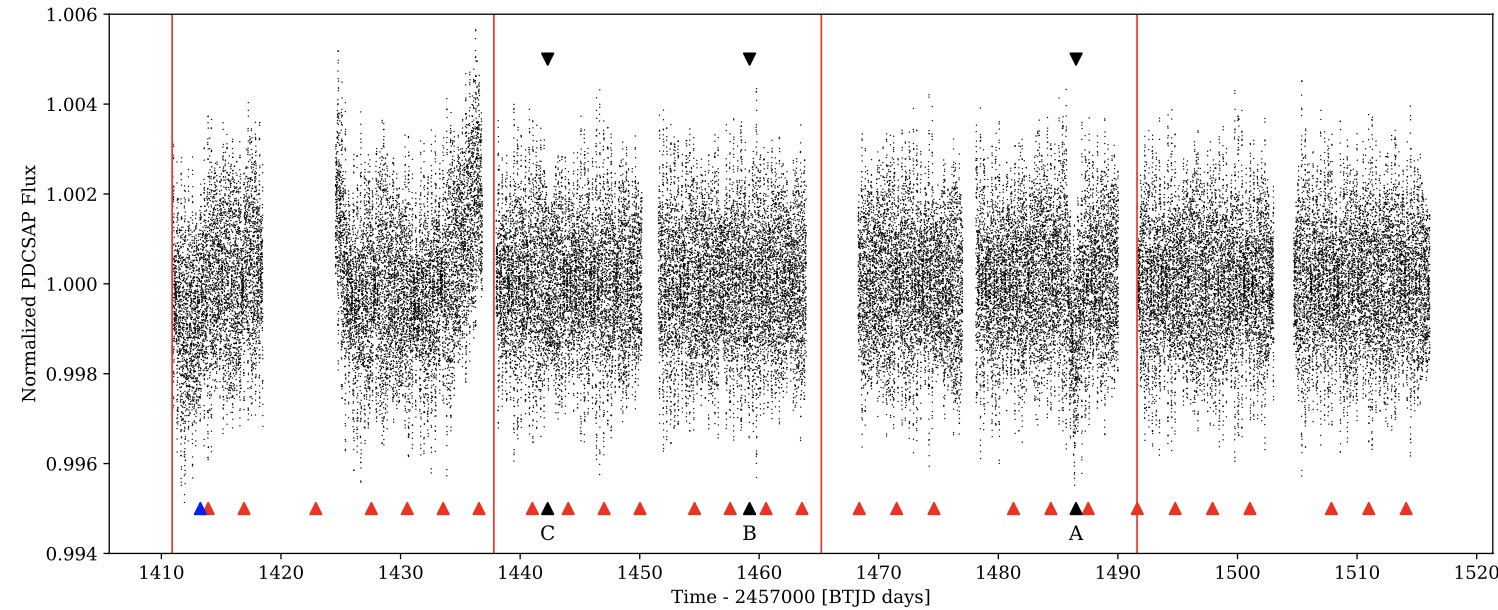
The star itself is a Delta Scuti pulsator, ringing like a bell due to an internal pulsation driven by the Kappa-mechanism. Over 35 separate frequencies were removed from the light curve to reveal the shape of three exocomets during the 2019 TESS observations.

A later paper (Lecavelier des Etangs et al., 2022) discovered an additional 27 exocomet transits over a total of 156 days, enabling a power law fit to the size distribution of the exocomets and showing similarities to those in our own Solar system.
